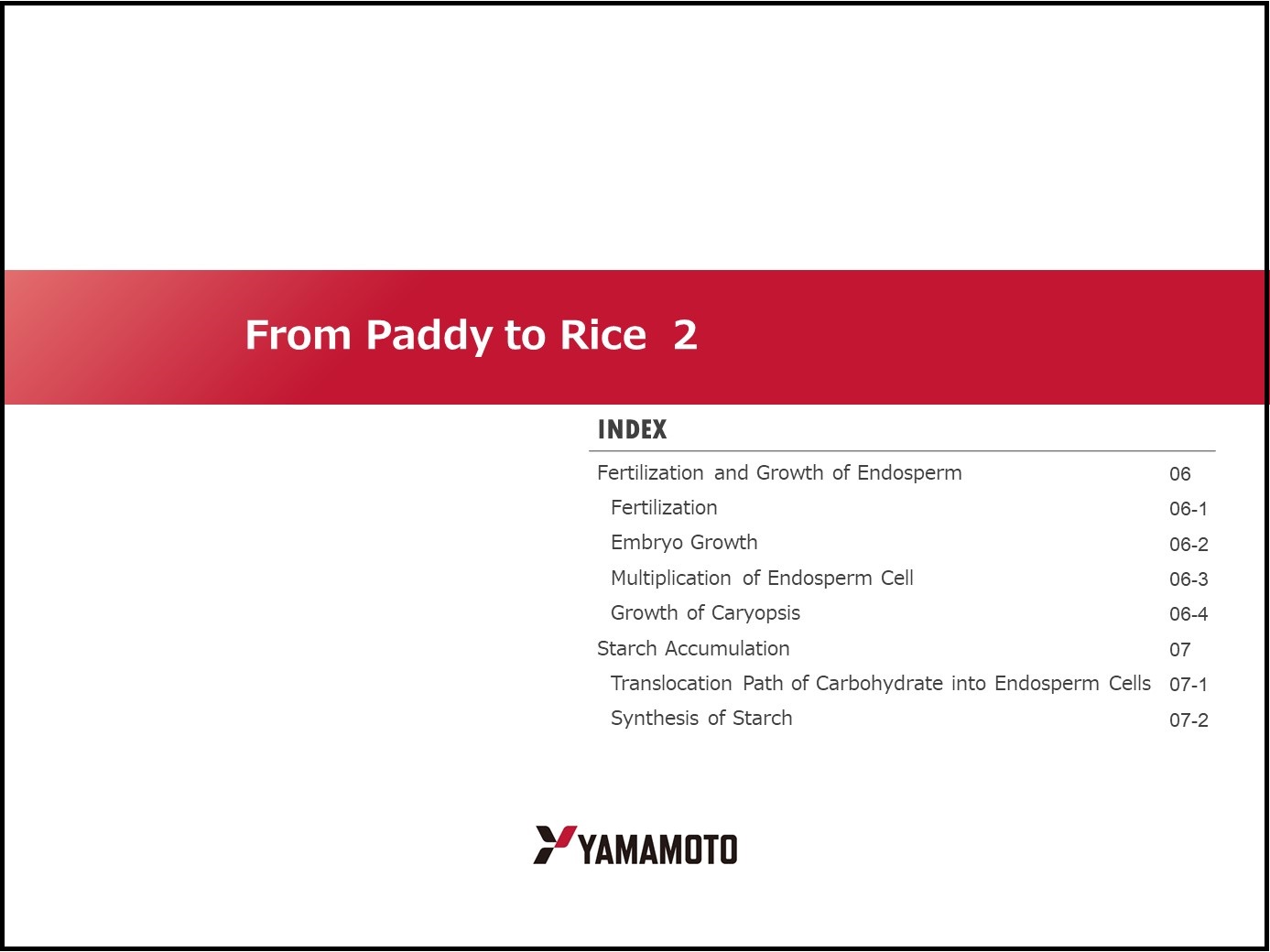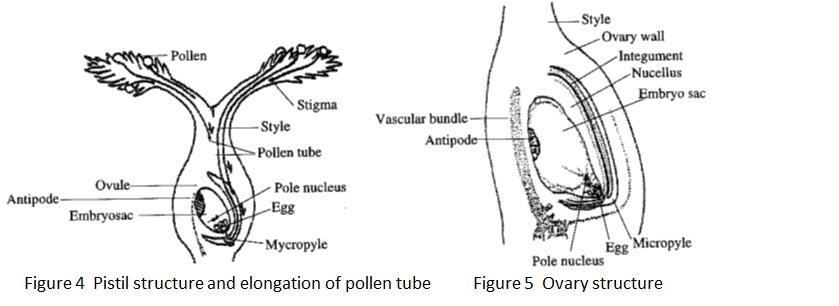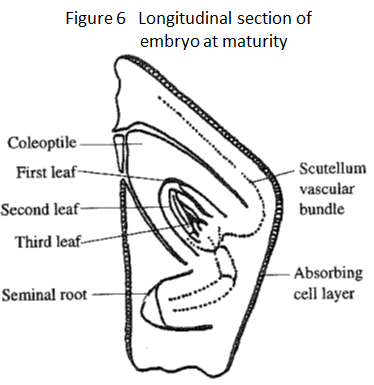7. From Paddy to Rice 2
- INDEX -
Fertilization and Growth of Endosperm
Fertilization
Embryo Growth
Multiplication of Endosperm Cell
Growth of Caryopsis
Starch Accumulation
Translocation Path of Carbohydrate into Endosperm Cells
Synthesis of Starch
Fertilization and Growth of Endosperm
Fertilization
Fertilization is an internal change that takes place in the flowering stage. A great number of pollen stuck on stigma will germinate within a couple of minutes if the conditions are suitable, and start growing through style in competition to reach the basal part (Fig. 4). A pollen tube goes through the base of the style and enters the embryo sac through micropyle located at the basal of the ovary, and releases two pieces of sperm nucleus. The one unites with an ovum and produces a fertilized egg, and the other unites with two pole nuclei and produces an endosperm nucleus (Fig. 5). Fertilization such as the paddy’s, where two fertilizations occur simultaneously, one of ovum and another of pole nuclei, is called double fertilization. When one pollen tube enters the embryosac ad completes fertilization, no other pollen tubes are able to invade the embryosac.
The suitable temperature for pollen to germinate is 30 ? 35 ℃. Fertilization completes its process in a few hours after pollination, when the endosperm nucleus starts cell division immediately.
Embryo Growth
The fertilized egg divides itself into two on the day after fertilization. It grows into an embryo by repeating cell divisions in succession. On the 4th day after fertilization, the initial growing point or the stem can be observed.
At about the 10th day, the size of the embryo grows rapidly, and in about 25 days after fertilization, it nearly completes its morphological growth. In its maturity stage, division of the primordium of three leaves and radicle can be seen (Fig. 6).


